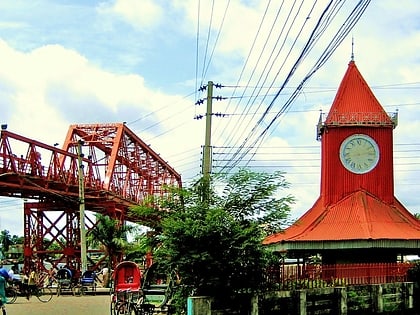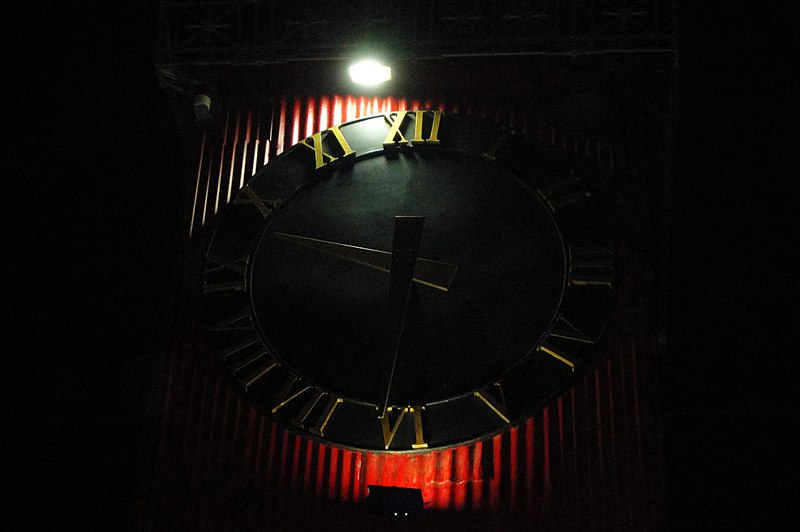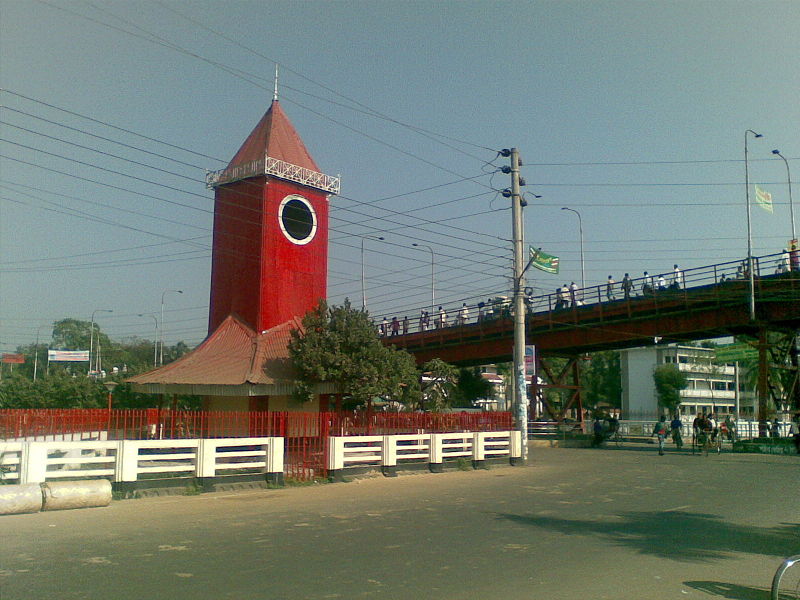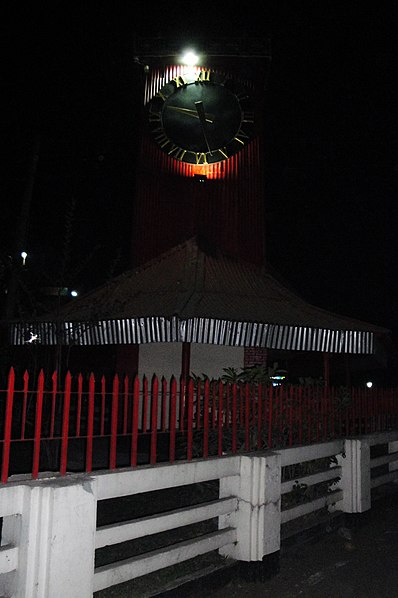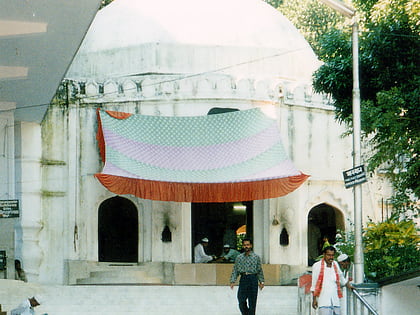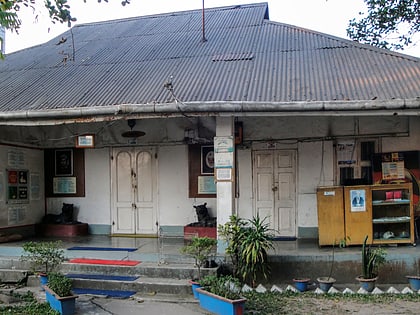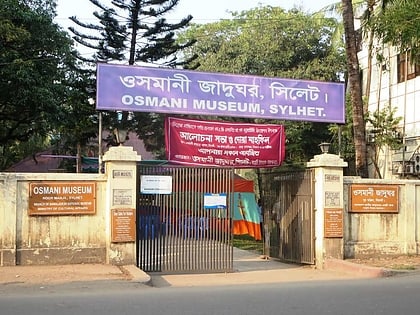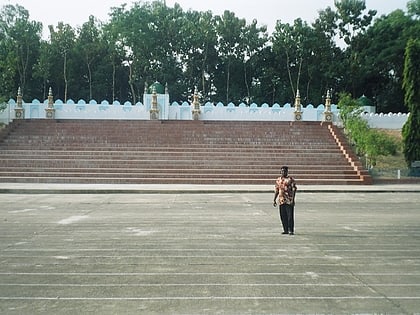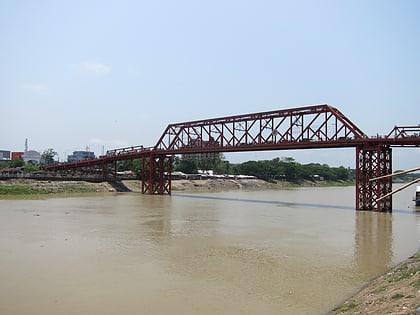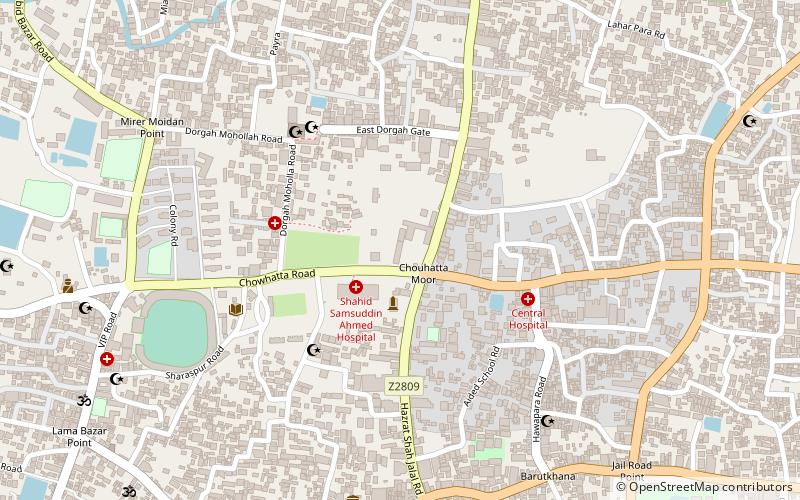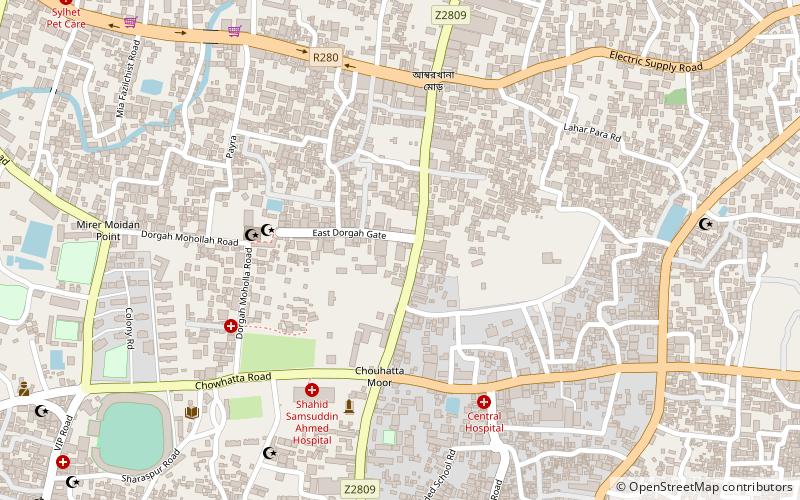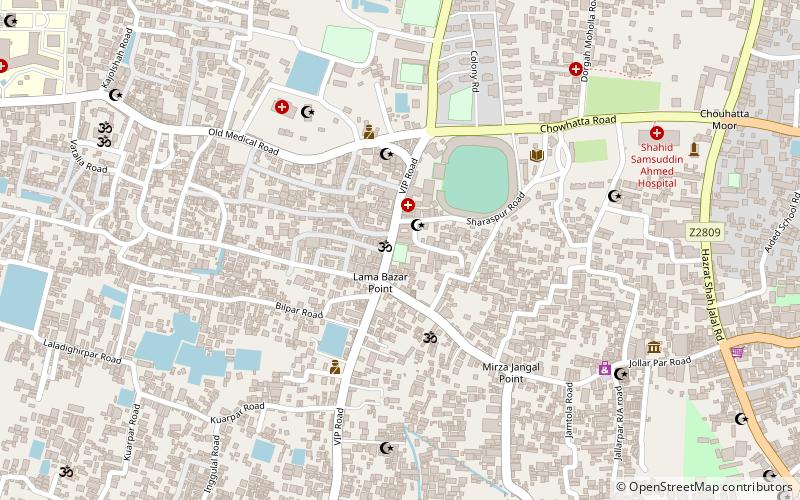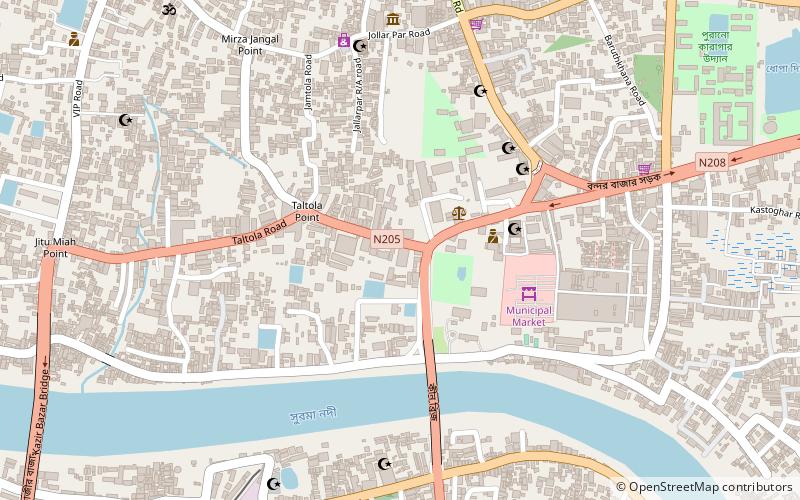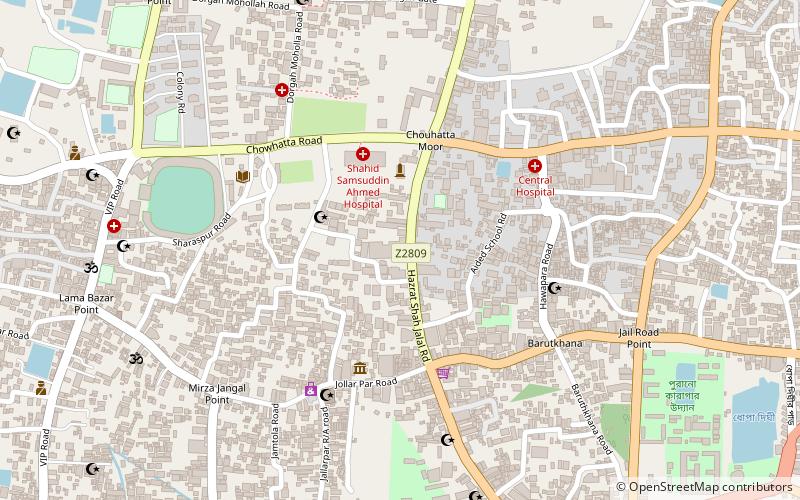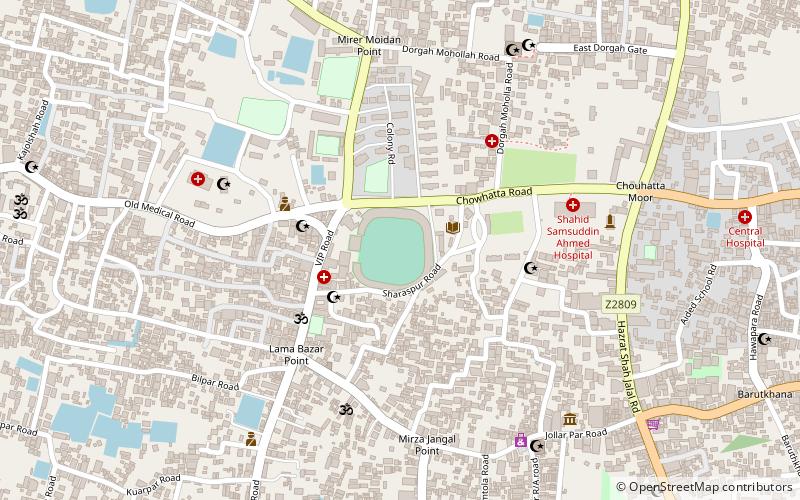Ali Amjad's Clock, Sylhet
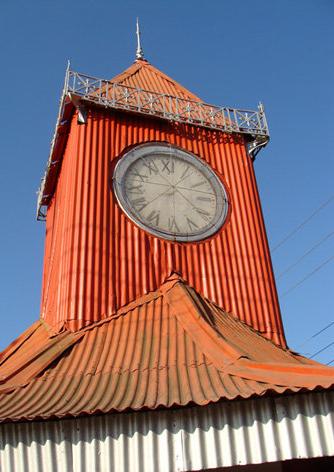
Facts and practical information
Ali Amjad's Clock stands as a historic emblem in the bustling city of Sylhet, Bangladesh. Erected in 1874, this clock tower is not just a timekeeper but a testament to the region's colonial past. Positioned near the Keane Bridge, over the Surma River, the tower is an essential landmark for the local populace and a point of interest for visitors to the city.
The clock, named after its benefactor, Nawab Ali Amjad Khan, has been a silent spectator to the evolving cityscape of Sylhet. It was installed to serve the public, ensuring that everyone had access to the correct time, which was a luxury in the 19th century. With its four-faced clock, it has been guiding the residents of Sylhet for over a century.
Though not as towering as many global monuments, Ali Amjad's Clock holds its own charm and historical significance. It's a reminder of the city's transformation from a colonial outpost to a modern urban center. The tower, while functional, is a piece of heritage, standing as a bridge between the past and the present.
Accessible to tourists and locals alike, the tower is a popular spot for those interested in the history and culture of Sylhet. It is a point from which many start their exploration of the city's offerings, from its tea gardens to the sacred shrines that dot the landscape.
Ali Amjad's Clock – popular in the area (distance from the attraction)
Nearby attractions include: Shah Jalal Dargah, Museum of Rajas', Osmani Museum, Sylhet Shahi Eidgah.
Frequently Asked Questions (FAQ)
Which popular attractions are close to Ali Amjad's Clock?
How to get to Ali Amjad's Clock by public transport?
Train
- Sylhet Railway Station (12 min walk)
Bus
- Sylhet Kodomttoli Bus Terminal (12 min walk)
- Bus Station (16 min walk)
